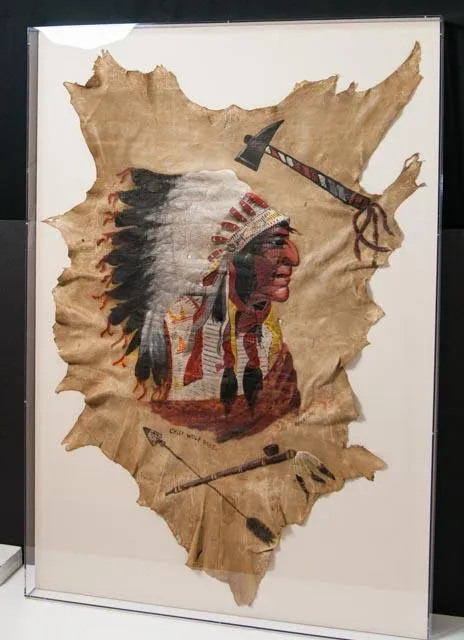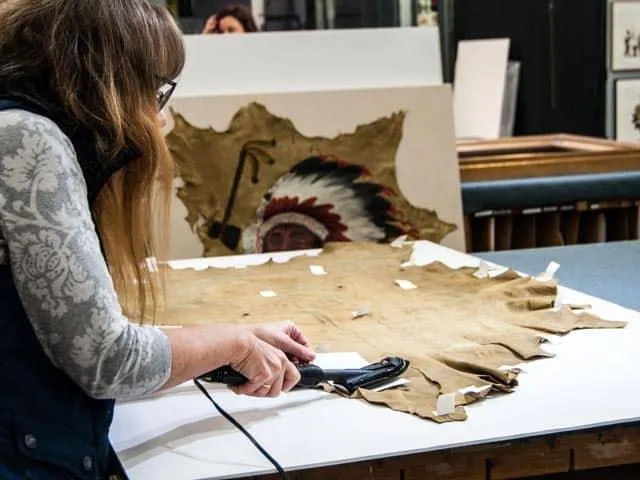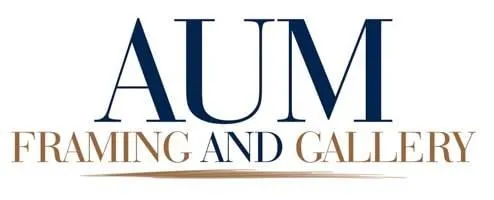Fabric, Needlework & Textile Framing

Textiles and frabrics can be turned into beautiful displays. Whether it’s batik artwork bought on vacation, an autographed sports jersey, a handmade cross-stitch, embroidery or needlework piece, or clothing such as a uniform, baptismal gown, or wedding dress, why not display it as a custom framed textile? At the same time, you’ll be preserving it instead of leaving it tucked away in storage.
If you’re not familiar with us or our work, we invite you to take a look around our website or, even better, come in and talk to us about your custom textile framing project. We’ll walk you through the process and offer design tips.
Custom Framing for Textiles, Needleworks and Fabric
Framing a textile correctly is both an art and a science. It must be designed beautifully but also framed with preservation in mind. At AUM Framing & Gallery, we have the expertise to do both – creative designs and museum-quality conservation techniques.
Textiles require the same acid-free matting or backing that works on paper art. Without it, acids in the substrate can leech into the textile, causing color changes and fiber damage.



There are a few things to consider when custom textile mounting:
- Frame design
- Mounting of the textile
- Type of glazing (glass, acrylic, or none)
Frame Design for Textiles
One of the most important things to remember about framing textiles is that they are three-dimensional works of art.
The frame design must allow enough space for the textile to sit comfortably between the glass (if used) and the mounting substrate. This is achieved with frame spacers, which may be made of archival matboard, fabric-wrapped foam-core strips, or spacers of the same material as the mounting substrate. For shallow pieces, we may use acrylic spacers. For textiles ¼" or more in depth, handmade matboard or fabric-wrapped spacers are required.
For deeper items, we often recommend shadowbox frames or custom closed-corner frames that can be built to the needed depth. These ensure the textile, backing, and spacers all fit safely within the frame.
Finally, we make sure the design, finish, and overall aesthetic of the frame complements the textile’s colors, material, and historical significance.

Mounting of the Textile
How a textile is mounted is often more important than the frame itself.
Our team considers:
Value – Is it historically, sentimentally, or monetarily valuable?
Material – How fragile is it, and will it degrade over time?
Weight – Does it require extra support to stay secure?
Our standard method is to sew the textile by hand onto a fabric-covered substrate or conservation matboard. This provides proper support within the frame. The type of thread depends on the textile, and we maintain a wide selection of thread colors and thicknesses to suit each piece.
For fragile or high-value items, we may use lower heat or archival hinges rather than stitching directly through the fabric.

Glazing
Protecting textiles with glazing (glass or acrylic) can significantly extend their life. Fabrics and skins, in particular, benefit from shielding against sunlight, dust, abrasions, and moisture.
We recommend UV protective glazing such as Conservation Clear Glass, Conservation Clear Acrylic, Museum Glass, or Optium Museum Acrylic.
Conservation Clear Glass/Acrylic – 99% UV protection, acrylic is lighter for large textiles.
Museum Glass – 99% UV protection, anti-reflective, and brightens colors.
Optium Museum Acrylic – 99% UV, anti-reflective, anti-static (to keep fibers/dust from sticking), shatter-resistant, abrasion-resistant.
Optium Museum Acrylic is often the best choice for fabric framing due to its safety, clarity, and protection.
Have your fabrics, textiles, and needlework preserved with custom framing!
If you have a textile you’d like to preserve and display, bring it to AUM Framing & Gallery. During your design consultation, we’ll guide you through the design options and materials to ensure your piece not only looks beautiful but is also preserved for future generations.
© Copyright 2025 AUM Framing & Gallery. All rights reserved. | Website design and digital marketing powered by FLOW5 Marketing

